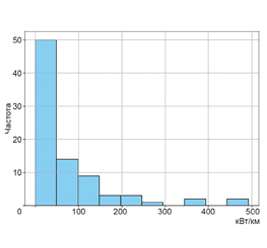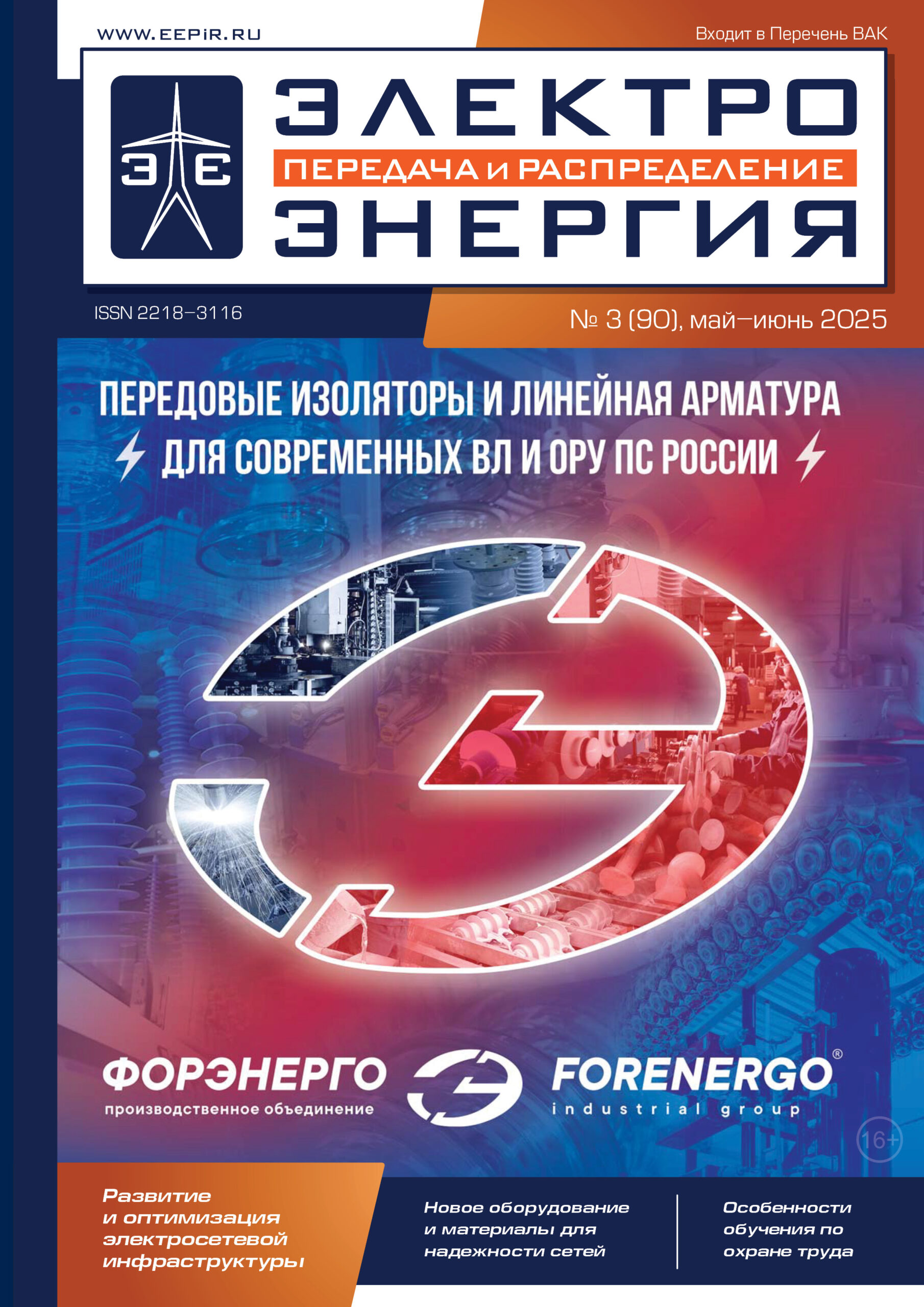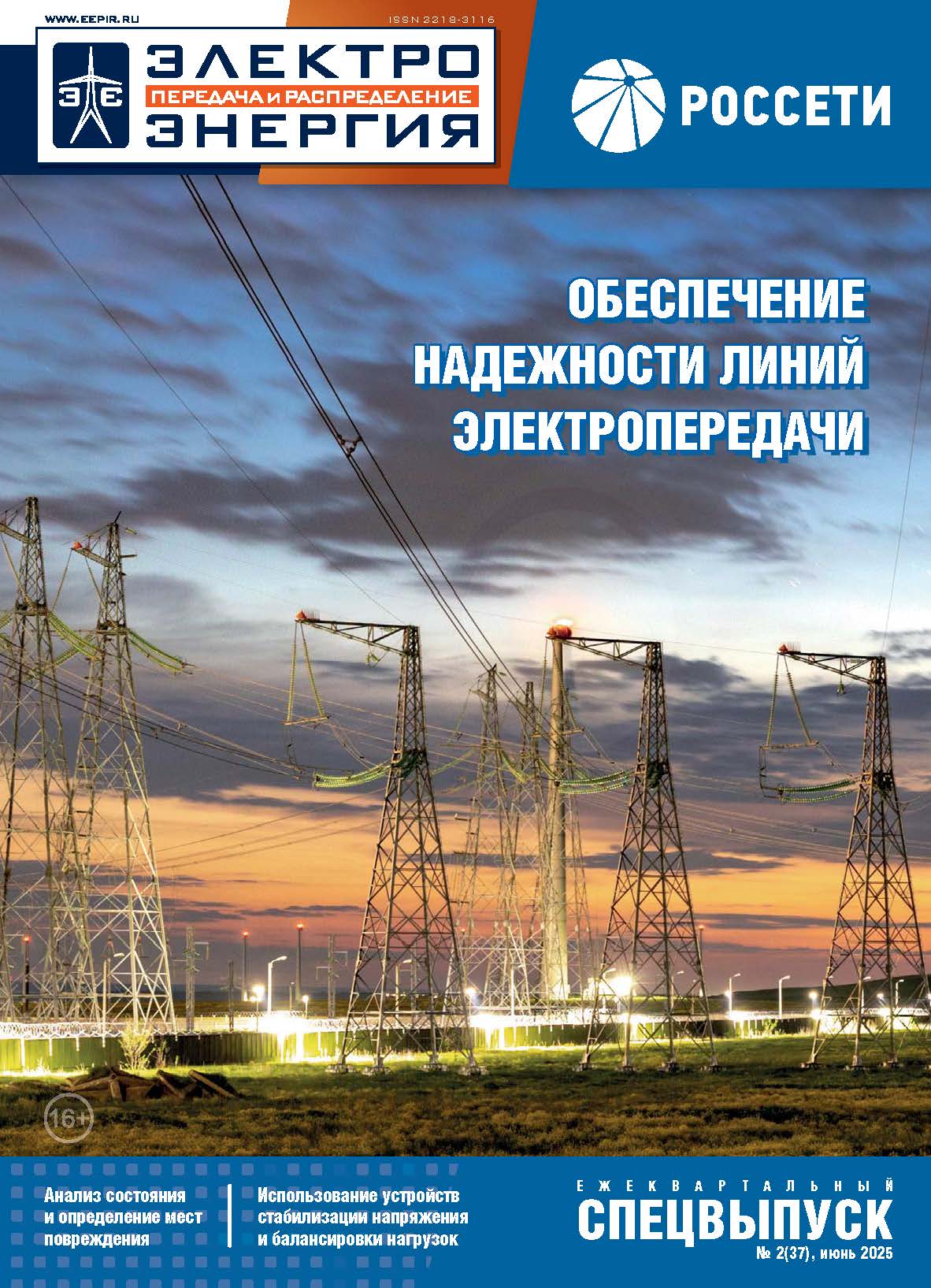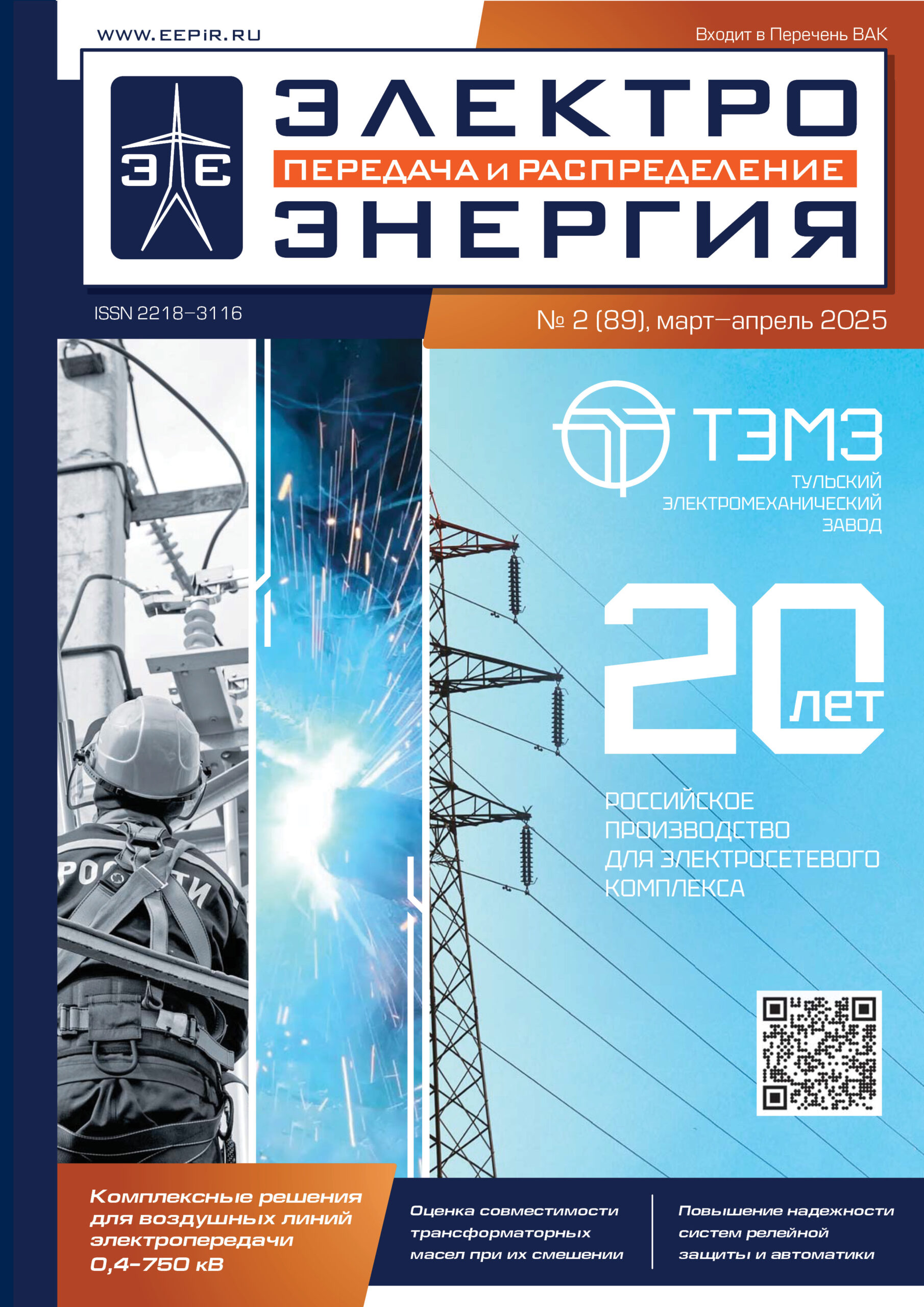
The MAIN JOURNAL for POWER GRID SPECIALISTS in RUSSIA
2014

www.eepr.ru
11
Development of Active-adaptive
networks
Head of the laboratory «Intelligent Energy» JIHT RAS, Deputy
Chairman of the Architectural Committee for creation of smart
grid at joint scientific and technical council of JSC UES FGC and
Russian Academy of Sciences Vladimir DOROFEEV (Владимир
ДОРОФЕЕВ) tells about features of smart energy-architecture
system with active-adaptive network and necessary conditions
for its implementation.
— Vladimir Valerianovich, now you are a mem-
ber of the Architectural Committee for creation of
IPS AAN, whose work is focused on the development
of reference architecture of active-adaptive network
(AAS). At the same time, both abroad and in Russia
continues to develop the concept of creating an "intel-
lectual grid", or Smart Grid. What is the difference
between AAS ideology from Smart Grid ideology?
— FGC UES in Russia for the
fi
rst time, set fundamen-
tally new approach to modernization of the technology
base of domestic power system. The
fi
rst step in this di-
rection was the elaboration of a concept for development
of intellectual power supply system with active-adaptive
network (IPS AAS).
The preparation of this document involved the analysis
of work carried out in that regard. It should be noted that
up to now developments conducted in different countries
have no unambiguous interpretation for the term Smart
Grid. However, the ideology of this development has been
primarily focused on creating control systems within the
local electricity distribution level of domestic nature of
the controlled load and maximum inclusion in these sys-
tems of alternative and renewable energy sources with
emphasis on energy saving. Recently, however, a number
of countries — United States, China, South Korea and
Europe — carried out works beyond the local systems
to create interfaces for their integration into the central-
ized power grid, as well as to develop general manage-
ment systems including the use of multiagent control
principles.
The Russian approach to new technology is based
on creating conditions enabling the integration at all
levels — from the FGC to distribution networks — of
active elements that change the network parameters de-
pending on the situation in power grid, creating terms for
connected to customer networks (generation and consum-
ers) providing the most complete and ef
fi
cient transport
of electricity between them. This is a more complex task,
requiring both multiparametric substantial modernization
of the primary power equipment and the creation of a fun-
damentally new management system that responds to the
situation in real time. Moreover such a system is based on
the enormous information
fl
ows and modern high-speed
and secure communications systems. In general, we are
talking about creating energoinformational system of a
new type, unifying new energy technologies, modern dis-
tributed control systems and telecommunications. This
type of energoinformational system creates the possibility
of new market mechanisms in the relationship between
suppliers and users of electricity, providing them with the
most ef
fi
cient use of this resource. All of this together is
called an IPS AAS.
One of the
fi
rst steps towards the practical implemen-
tation of this ideology was the establishment of the joint
scienti
fi
c and technical Council of JSC FGC UES and the
RAS Architectural Committee on development of intel-
lectual energy. The Committee in addition to representa-
tives of these organizations includes representatives of
generation, consumers, local networks and developers
of IT technologies. The Committee established expert
working groups, specialized in different directions, to
provide agreed decisions on building IPS AAS architec-
ture, which meets the interests of all actors involved in
the production, transmission, distribution and consump-
tion of electricity. On the basis of the proposals of the ex-
pert working groups the Architectural Committee should
take a decision on the overall architecture of the system
to move: the road map, including the development of pi-
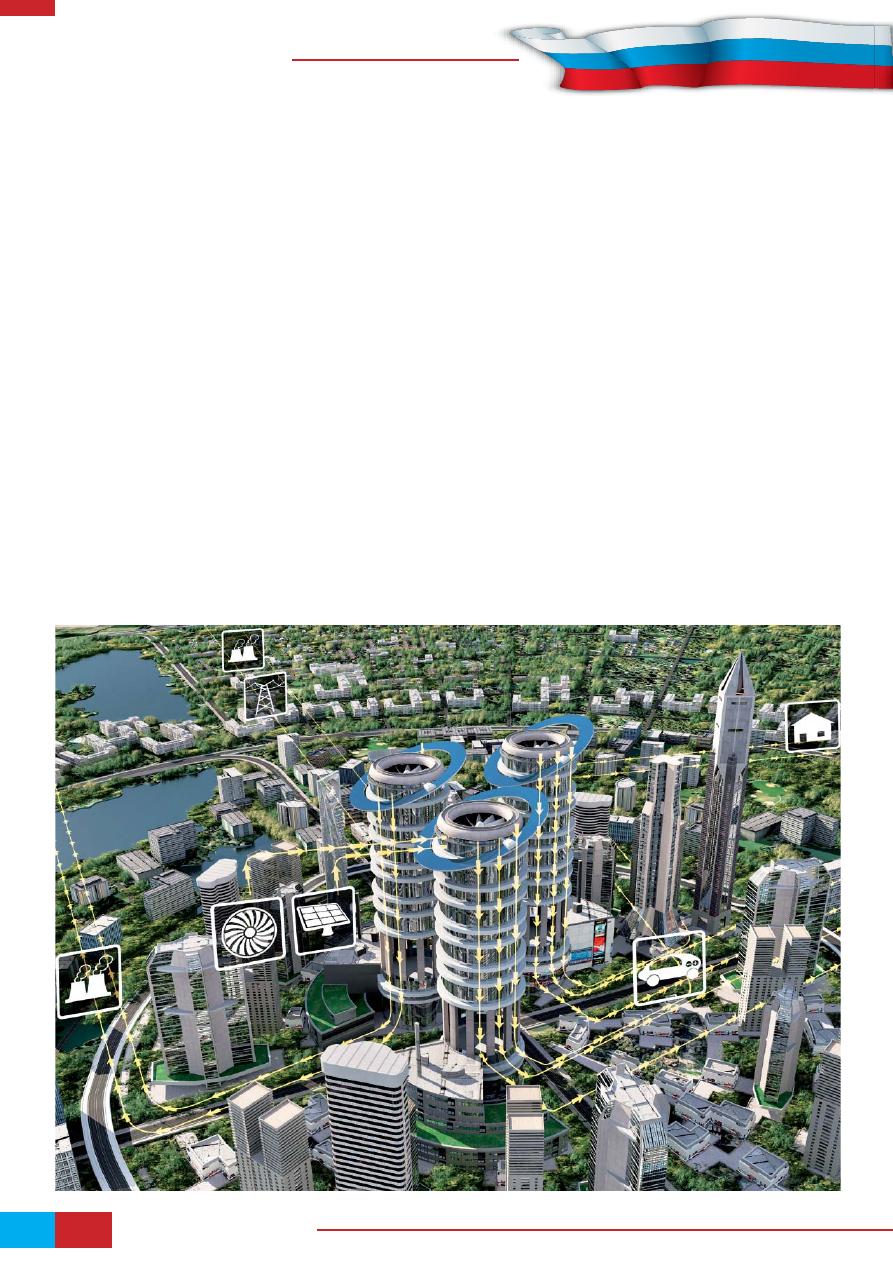
DIGEST, February, 2014
12
Network management
lot projects of energy fragments, pilot projects of sepa-
rate united energy systems (in particular, East IPS) and
further steps towards creating entire IPS AAS of Russia.
— Could you explain what the IPS AAS architec-
ture is and what exactly should the Architectural Com-
mittee agree on?
— The concept of system architecture has its roots in
the development of different kinds of computer systems,
primarily built on the principle of parallel computing in
order to improve the performance of the overall system.
With the development of information technologies provid-
ing transfer, processing and use of information for various
purposes, this concept has slightly extended including not
only computing, but also various types of communication
channels and data throughput with the de
fi
nition of ways
they interact with distributed computing systems. Today
when developing complex systems the notion of their ar-
chitecture is critical when determining the principles of
construction and future operation of the system during its
design.
Reference architecture should be universal providing
different classes and categories (users) of the future sys-
tem with maximum comfort to include their own current
processes and give an idea of the possible transformation
of these processes in the future under various conditions
in user and external environments.
In developing the IPS AAS ideology the architecture
concept of this system includes presentation of a uni
fi
ed
description of the conceptual model specifying objects in
the system, interfaces between these objects and services
presented to processes participants supported by the sys-
tem. Architecting the IPS AAS as energy-system should
include three basic elements: the architecture of power en-
gineering systems, architecture of information and com-
munication interactions including control systems and
architecture of economic relations between actors in the
power market.
As I've already said the Architectural Committee con-
sists of experts from many organizations interested in the
fact that the future energy system meets their requirements,
in some cases contradictory, to access and use of energy
supplied by grid. The harmonization of the positions of
various parties through architectural view of IPS AAS is
the main objective of the Architectural Committee.
The most dif
fi
cult is the communications architecture
that connects all IPS AAS subsystems; so the
fi
gure illus-
trates an out-line scheme of this architecture.
— When do you schedule to complete works on uni-
fi cation "smart grids" architecture and the develop-
ment of appropriate standards?
— The developed concept de
fi
nes a strategic vision
of the future energy system, all work to create the smart
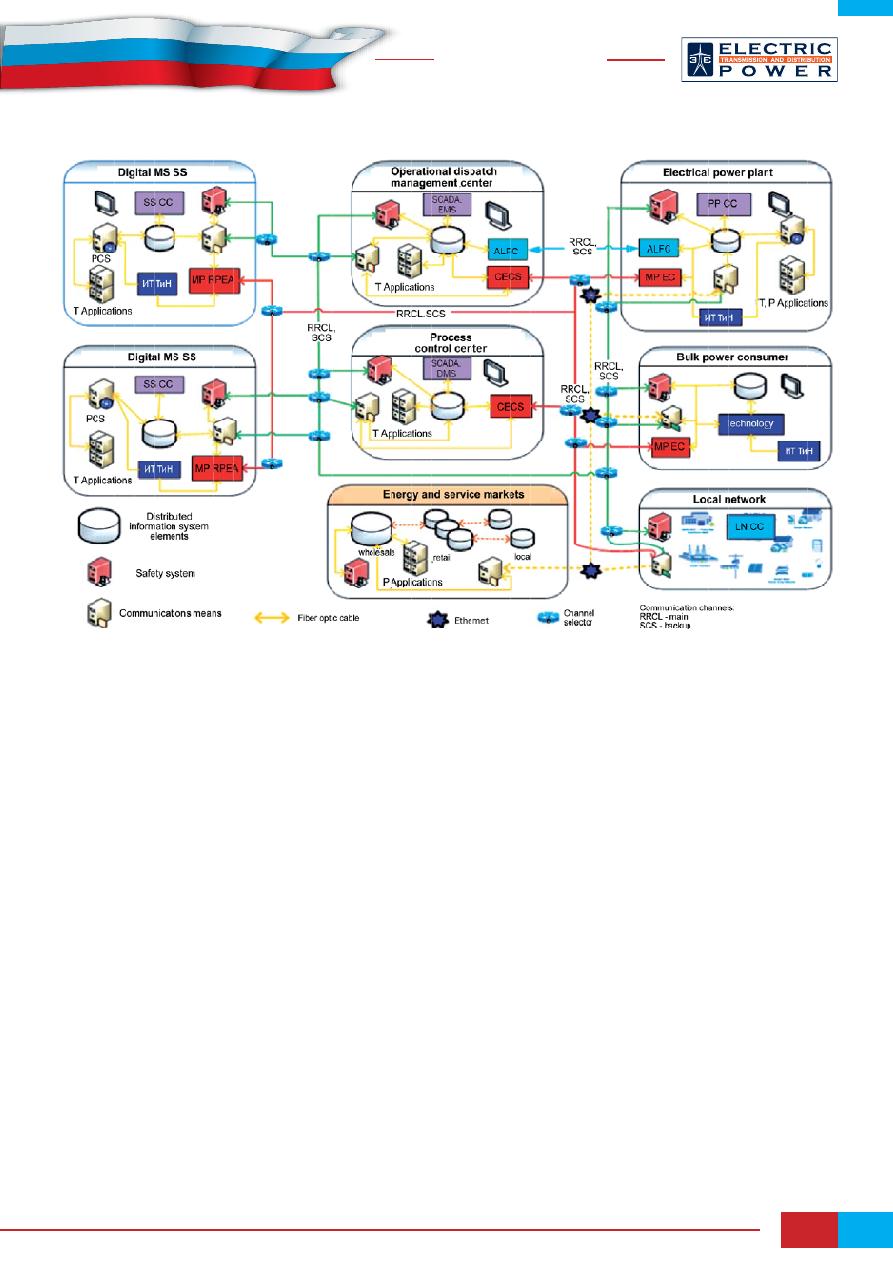
www.eepr.ru
13
Fig. IPS AAS extended communications architecture
grid — a complex and controversial process. Many of the
tasks require major scienti
fi
c and engineering study and
reasoning. Some decisions in the course of this work may
be deemed non-viable (infeasible or low-tech), there may
be new ideas or ways to solve. Now, for example, there is
a discussion about the advantages and disadvantages of
centralized and distributed control systems and their pos-
sible combinations (the optimal allocation of authority) to
create IPS AAS control system. The choice of this deci-
sion will condition many subsequent steps. In general, the
work on the creation and coordination IPS AAS architec-
ture will be completed by the end of 2014.
If we talk about standardization, the creation of such a
system is impossible without coordinated decisions based
on the huge number of standards. In this regard it is neces-
sary to use existing and emerging international standards,
take part in the work of recognized organizations such as
the International Electrotechnical Commission (IEC), the
International Telecommunication Union (ITU), the Na-
tional Institute of Standards and Technology (NIST) and
others. In addition, a number of standards should be de-
veloped by Russian specialists, in particular linking CIM-
power system model with market procedures for building
the single information space for IPS AAS technology.
— What effects will be achieved in the implementa-
tion of such an ideology?
— Given the complexity of the future energy system
its effectiveness can not be evaluated by conventional
methods. Comparison of the current state of the system
by a particular range of parameters, including those men-
tioned by you, as well as today user satisfaction (or dis-
satisfaction) with the same parameters and assessment
for 2025—2030 IPS AAS, especially at this stage, when
all solutions are not developed and tested yet, is only
possible in the representation of qualitative or expert
assessments.
With that said, it should be noted that the
fl
exibility
of the transmission system in conjunction with the imple-
mentation of the market mechanism of electricity trans-
mission services will permit to identify the most ef
fi
cient
transport routes increasing their use (load) factor and, con-
versely, to abandon heavily loaded and unused connec-
tions. The effect of such solutions can be evaluated by the
two constituents:
• reduce electricity transmission losses to 30% of the
current level;
• reduce direct investments to the power part of the
power system up to 20%.
It should be noted that the cost of a system creation
is primarily related to capital investments in automation
and control systems, and their value is commensurate with
capital investments savings.
It is possible to cite estimates for other indicators in-
cluding the improvement of reliability due to more ef
fi
-
cient operation of automation and control systems, as well
as active participation of electricity consumers in the pro-
cess, but I'm not going to call speci
fi
c numbers, because it
requires even more serious study.
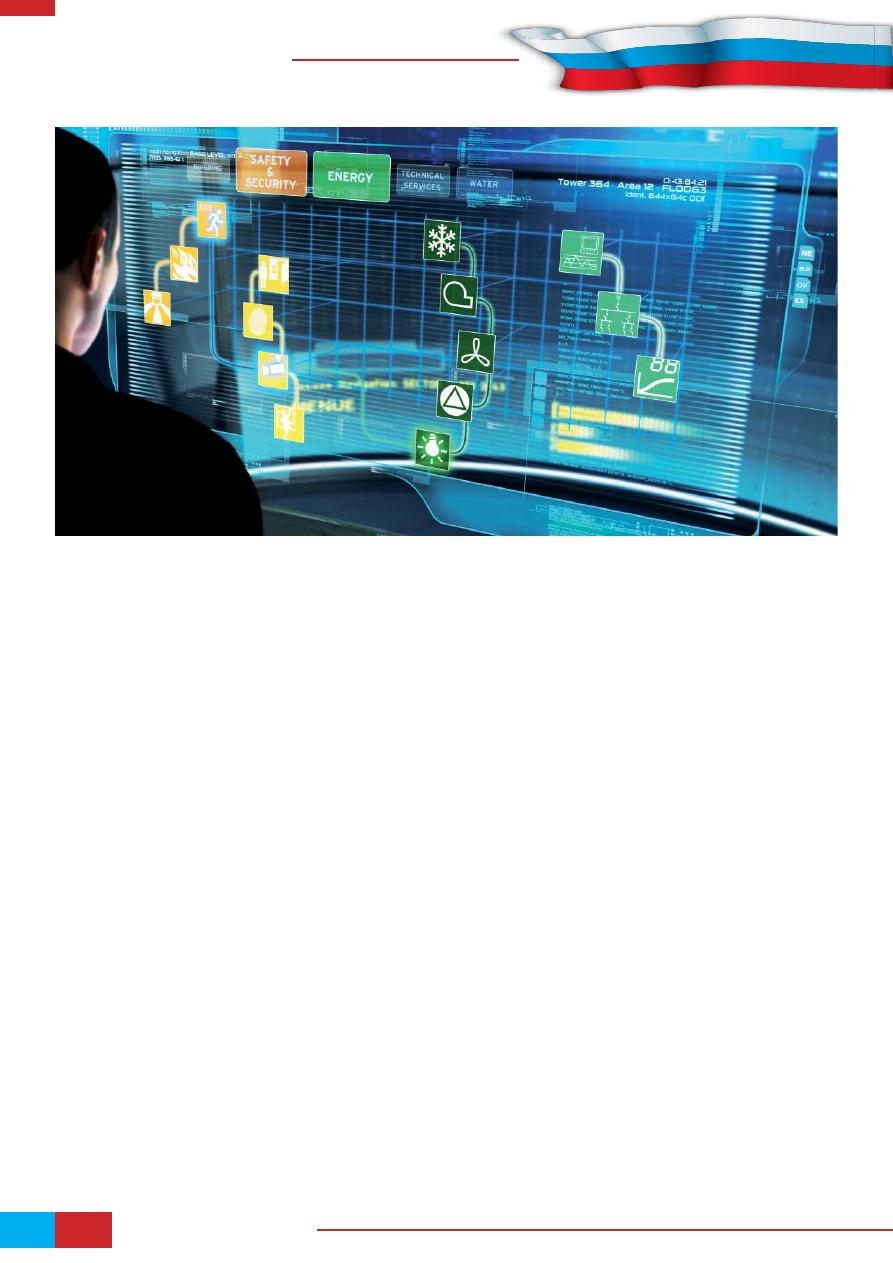
DIGEST, February, 2014
14
Network management
I want to give you one example. If you go back 10—15
years ago, you remember, what was the connection? Mo-
bile communications devices only began to emerge. At
that time, one could not even imagine how in today's life
we cannot do without them. Whether it was possible then
to evaluate the effectiveness of such solutions and the tech
boom (various services) around the mobile communica-
tion systems? Implementation of the IPS AAS is to a great
extent an analogue of such a solution.
— The speed and success of implementation of any
"smart grid" architecture in workfl ows of network
companies are directly dependent on the readiness of
core network equipment, as well as the existing devices
and systems to manage this equipment. We know that
more or less prepared for such events are UNPG fa-
cilities only. If we talk about the distribution networks,
willingness of major tie-stations and medium voltage
networks in large cities can be considered. All other
network objects before implementing automation de-
vices will likely require reconstruction and moderniza-
tion, and this huge investment, which will stretch over
years. With this in mind, at what levels, highlighting
what stages and in what timeframe “smart grid ideol-
ogy” could be introduced in Russian power industry?
— Your question is discussed at different levels and
constantly posed as follows: "And if we are not ready to-
day to receive signi
fi
cant effects, is it worth doing this? Or
maybe develop the network as they did before? After that
the power system, available in Russia was created by cer-
tain canons and is one of the most powerful in the world".
But the situation is such that the power system equipment
because of its age still requires replacement. Therefore,
when determining the directions of modernization and de-
velopment it is essential to determine what power system
will be result of these works. The concept of IPS AAS
development is the answer to the question and establish-
ment of its architecture is the
fi
rst real step to design. The
technical requirements to the system, its elements (power
facilities and the equipment installed), as well as to the
systems of control and information create for the develop-
ers an understanding what kind of equipment and systems
will be in demand and what should be their characteristics,
including cost. One of the key conditions is that equip-
ment installed at the facilities must have the functionality
corresponding to new working conditions of the power
grid, and the cost of it should not only exceed but also be
cheaper than the existing equivalents. Of course, the pow-
er grid is being equipped with many new items: a modern
accounting system, automation and information systems,
cybersecurity etc. These systems require additional capital
costs (estimated), which should not exceed the amount of
savings of needed investments to the power part of the
grid.
If we talk about the readiness of the power system, both
at the level of the UNPG and at the level of the distribution
networks, the assessment expressed in your question is not
quite accurate. UNPG objects are prepared for implement-
ing IPS AAS not so much physically, but ideologically,
in view of the fact that the Federal grid company was the
fi
rst to create the ideology for the new energy system. Its
practical realization at such major and capital-intensive
projects, such as the substations and transmission lines
in the UNPG, really requires major capital investments.
But even the availability of funds does not determine eve-
rything. For example, even the design process requires a
lot of regulations to be revised, as well as quali
fi
ed staff
of designers and builders who is ready to implement new
solutions. However, objects that allow to talk about the

www.eepr.ru
15
fi
rst real steps towards the creation of IPS AAS at UNPG
level have already begun to appear. 500 kV Beskudnikovo
substation equipped with the innovative asynchronous
compensators, allowing a wide range of reactive power
regulation of the leading to reduction of losses, improving
the reliability of the power system (stability during severe
disturbances) and the maintenance of power quality indi-
cators may serve as an example.
In distribution networks creation of IPS AAS is clos-
er to existing foreign counterparts — the Smart Grid —
many of its elements are already available on the market.
In addition, individual objects of distribution networks, of
course, are not in any degree comparable with the UNPG
capital-output ratio. But here comes the scaling factor,
when signi
fi
cant ef
fi
ciency can be achieved at mass ap-
plication of new solutions, which in turn requires consid-
erable expenses. In this case, it is very important to select
objects for pilot projects to demonstrate the effectiveness
of the decisions taken. For the distribution networks such
objects can be areas of electrical networks, for example,
in large cities, where new large-scale construction and
energy-saving solution are implemented. In these cir-
cumstances it is necessary to interact with the urban and
municipal authorities for the approval of the new energy
regulatory framework.
I would like to point out that only the systems approach
for choosing the sequence of steps at implementing deci-
sions on creation of IPS AAS can have a signi
fi
cant impact
on both economic and socio-political spheres, when broad
mass of users of such a system become aware that there is
no other way. That is why the choice of pilot projects and
their launch should be approached very carefully. Crea-
tion of a uni
fi
ed network infrastructure Russian Grids al-
lows to
fi
nd objects for pilot projects that comprehensively
implement the whole chain of relations: generation (net-
work connections), bulk networks (UNPG), distribution
networks (distribution zone) and electricity consumers.
The
fi
rst such a large-scale pilot project on implementa-
tion of IPS AAS was conceived within East Uni
fi
ed Power
System. This zone was chosen due to its relatively small
(relative to other UPS) size and the diversity of primary,
including unconventional power sources. Today, the work
is aimed at its implementation.
For testing and simulation of new technological solu-
tions, primarily control systems based on new principles
(multiagent systems) R&D Center at FGS UES creates an
IPS AAS network control center test area.
Basic solutions and technologies proved-out, it is
planned to transfer them to the East UPS pilot sites with
subsequent replication at other sites and interconnection
in the uni
fi
ed system.
In general, the whole work package will be completed
by 2020. Its trial operation should con
fi
rm the effective-
ness of decisions, and then, from about 2022, it will be
possible to speak about the mass replication of solutions
and in the period 2025—2030 the Russian energy system
as a whole should get a new quality. By the way, their
foreign counterparts in the full version are scheduled to be
completed in about the same period.
— Foundation for implementation of "smart grid"
ideology needs to be built now. Taking into account rel-
evant promising solutions, not only network equipment
should be developed, but process of training should be
organized. In what way is work with employees of net-
working companies, equipment manufacturers, educa-
tional institutions organized?
— Today, in my opinion, JSC UES FGC is one of the
few companies in the Russian energy sector to pay seri-
ous attention to the training of personnel in general and
for new energy in particular. The company has signed co-
operation agreements with leading universities in Russia
engaged in training on practically all aspects of the in-
dustry “Electric energy”. These programs do not include
only organization of training for young specialists at the
undergraduate and graduate levels, but also competence
gap closure for key personnel of the company. The com-
petition called “Energoproryv” (“Breakthrough to the fu-
ture”) aiming at the search for promising ideas, projects
and teams of young professionals and academics has just
completed. The competition attracted more than 60 teams
from various cities of Russia who presented their projects.
As a member of the competition committee I can note the
high interest in the theme of the contest. Many projects
and ideas were aimed at the realization of smart control
systems and creation of equipment for intellectual energy.
Especially interesting was the project of an educational
nature, presented by the team of Yekaterinburg and aimed
at education of future energy specialists from schooldays,
and cultivating energy saving basics from childhood.
On June 20 in St. Petersburg at the St. Petersburg In-
ternational Economic Forum (SPIEF 2013) awarding cer-
emony for the winners of the National Youth Competition
“Energoproryv” for high-tech innovation and develop-
ment projects was held.
Thank you very much for the interview! We will watch
with interest the further development of active-adaptive
grid philosophy construction.
Interviewed by Ekaterina GUSEVA
Оригинал статьи: Development of Active-adaptive networks
Head of the laboratory «Intelligent Energy» JIHT RAS, Deputy Chairman of the Architectural Committee for creation of smart grid at joint scientific and technical council of JSC UES FGC and Russian Academy of Sciences Vladimir DOROFEEV tells about features of smart energy-architecture system with active-adaptive network and necessary conditions for its implementation.




